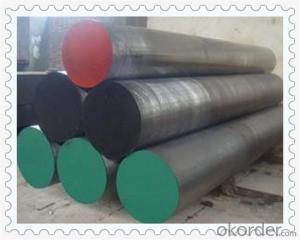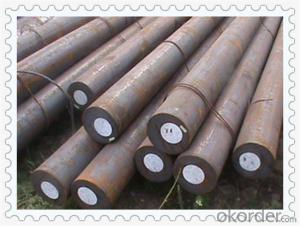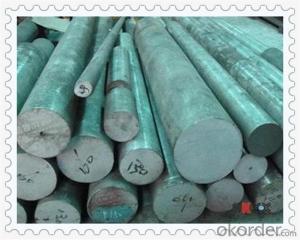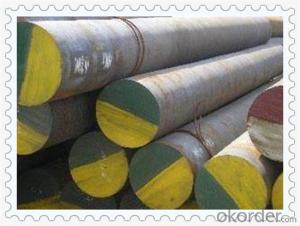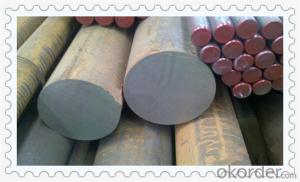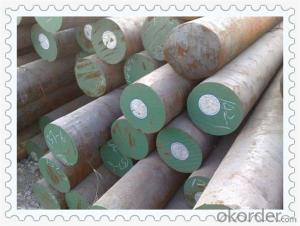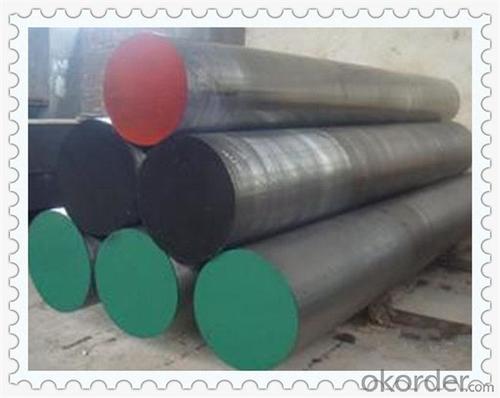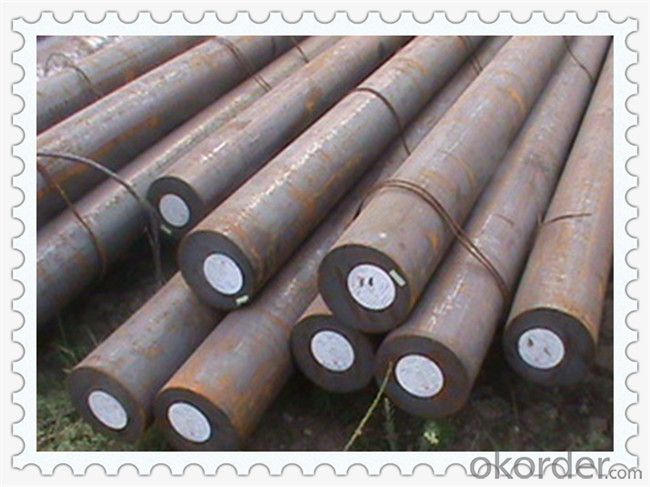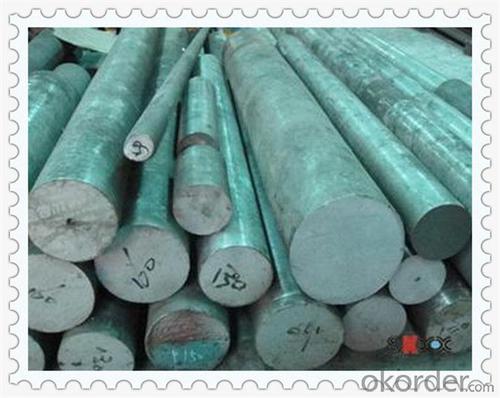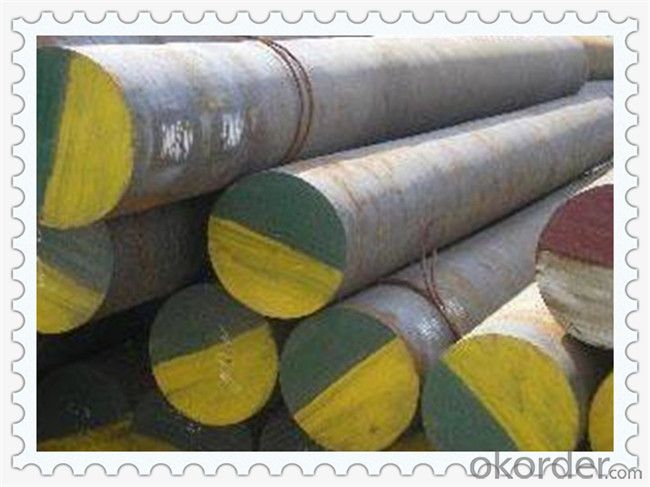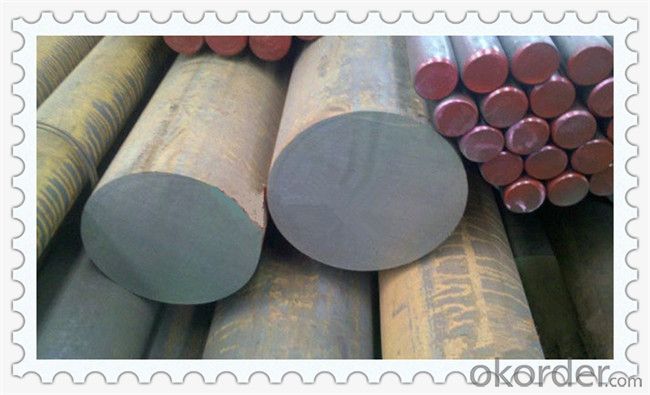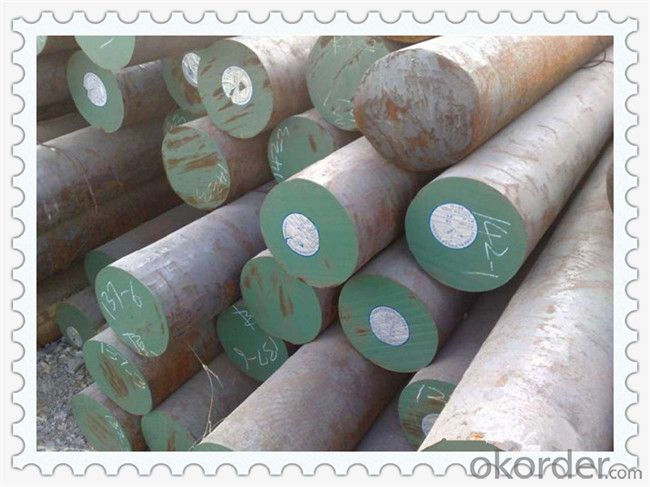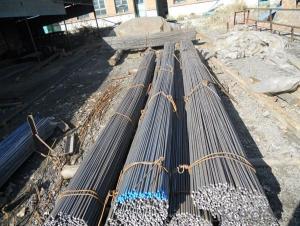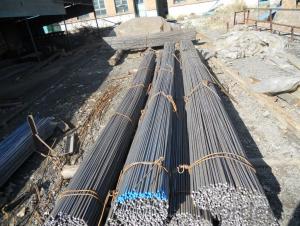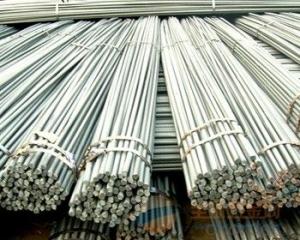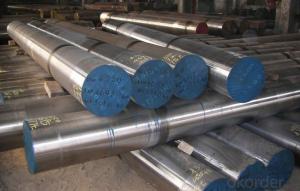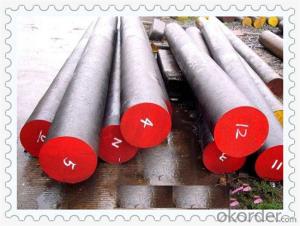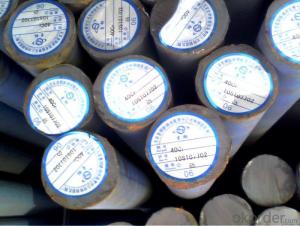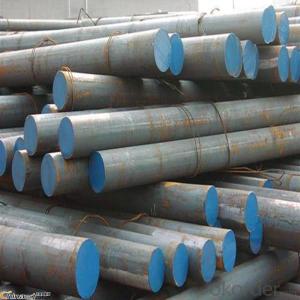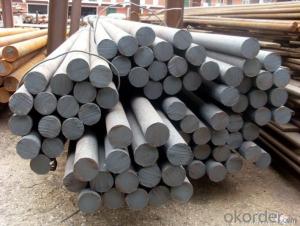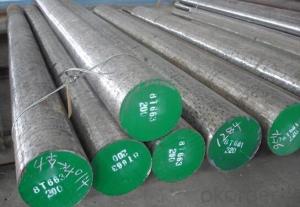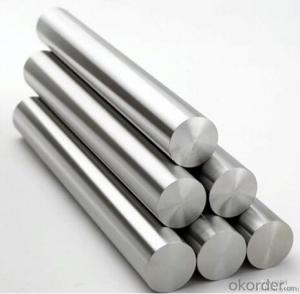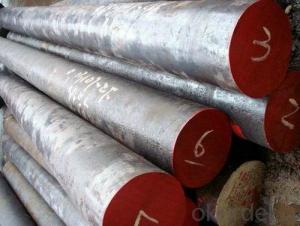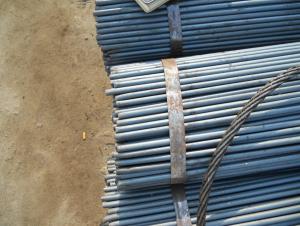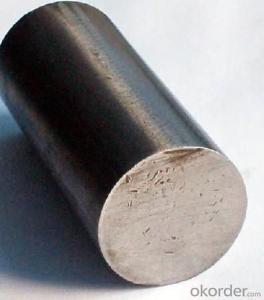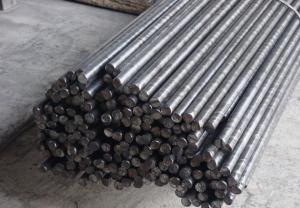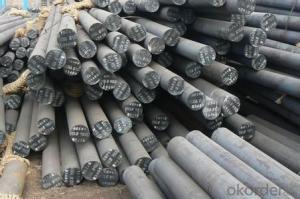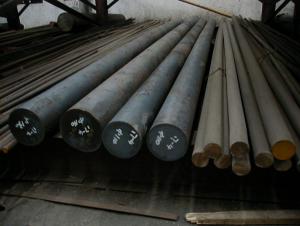4130 4140 4150 20MnCr5 42CrMo4 8620 4340 Alloy Round Steel Bar
- Loading Port:
- China main port
- Payment Terms:
- TT OR LC
- Min Order Qty:
- 30 m.t.
- Supply Capability:
- 10000 m.t./month
OKorder Service Pledge
OKorder Financial Service
You Might Also Like
4130 4140 4150 20MnCr5 42CrMo4 8620 4340 Alloy Round Steel Bar
Products Details
4130 4140 4150 20MnCr5 42CrMo4 8620 4340 alloy steel round bar
1. Grade: AISI 1045, SCM440, 42CrMo, 40Cr.
2. Size: 25-450m
4130 4140 4150 20MnCr5 42CrMo4 8620 4340 alloy steel round bar
Grade: | S45CB, 40Cr, SCM440, SCM420, 42CrMo, AISI4140, customized is available. |
| Size: | 25-450mm |
| Length: | 5.8m/6m fixed length, or as customized. |
| MOQ: | 20MT |
| Remark: | chamfering and straightness |
| Packing: | arround 3MT per bundle |
Chemical Composition (%)
Grade | C | Si | Mn | P | S | Cr | Mo |
42CrMo4 | 0.38-0.45 | 0.17-0.37 | 0.40-0.70 | ≤0.035 | ≤0.035 | 0.90-1.20 | 0.15-0.25 |
1.7225 | 0.38-0.45 | ≤0.40 | 0.60-0.90 | ≤0.025 | ≤0.035 | 0.90-1.20 | 0.15-0.30 |
4140 | 0.38-0.43 | 0.15-0.35 | 0.75-1.00 | ≤0.035 | ≤0.040 | 0.80-1.10 | 0.15-0.25 |
Products Show
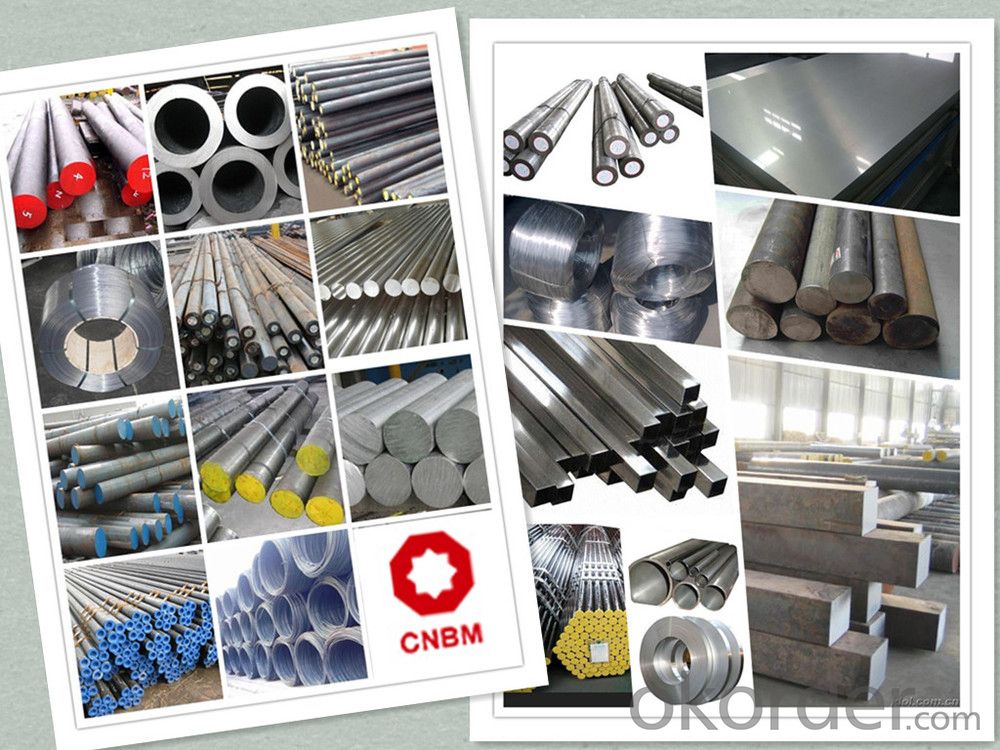
Product Overviews
| Product Name | Typical Grades | Diameter(mm) | Standard adopted |
| Carbon Steel | 20 (1020/S20C/C22) | Ø16-Ø300 |
GB/SAE/JIS/DIN
|
| 40 (1040/S40C/C40) | |||
| 45 (1045/S45C/C45) | |||
| Bearing Steel | GCr9 (51100/SUJ1) | Ø12-Ø250 | |
| GCr15 (52100/SUJ2/100Gr6) | |||
| GCr9SiMn (A485-Gr.1/SUJ3) | |||
Cr-Mo Steel | 20Cr (5120/SCr420H/20Cr4) | Ø12-Ø250 | |
| 40Cr (5140/SCr440/41Cr4) | |||
| 42CrMo(4140/SCM440/42CrMo4) | |||
| Gear Steel | 20CrNiMo | Ø16-Ø600 | |
| 20CrMn(5115/SMnC420/20MnCr5) | |||
| 20CrNiMo(8620/SNCM220/20CrMiMo2) |
Application
| Carbon Steel | Mold bottom, Plastic mold, Construction machinery parts Automobile parts, Security grills, Screens, Construction |
| Bearing Steel | Aerospace, Navigation, Nuclear energy, Chemical industry Electronic information, Petrochemical, Instrument and meter Transportation |
| Cr-Mo Steel | Mechanism & Fasteners gear, Stressed components for vehicles Engines and machines, Parts of larger cross-section |
| Gear Steel | All kinds of gears, Statically and dynamically stressed component for vehicles Engines and machine, Larger cross-section parts, Crankshafts |
Work Shop
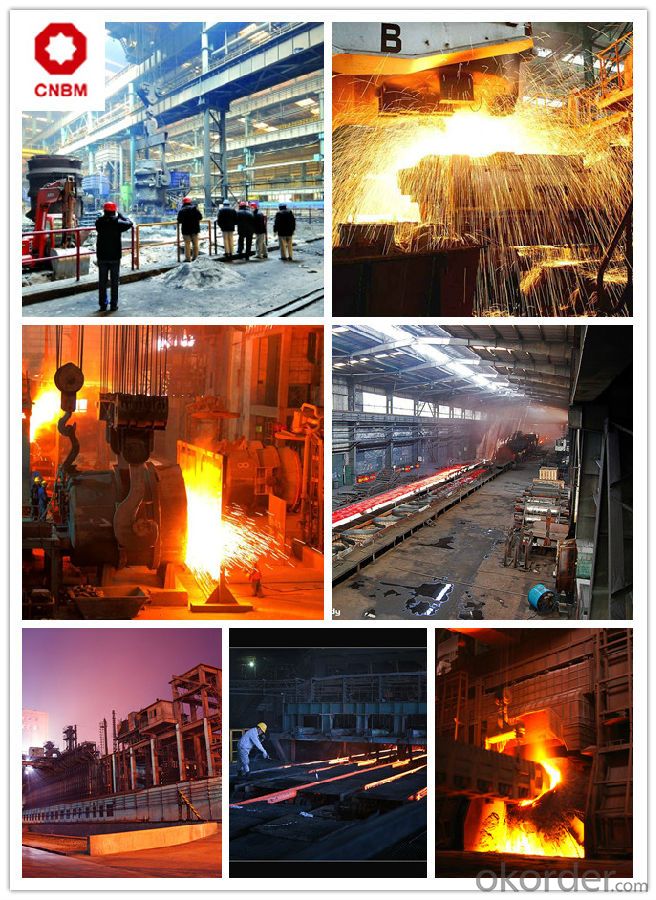
Company Information
CNBM International Corporation is the most important trading platform of CNBM group.
Whith its advantages, CNBM International are mainly concentrate on Cement, Glass, Iron and Steel, Ceramics industries and devotes herself for supplying high qulity series of refractories as well as technical consultancies and logistics solutions.

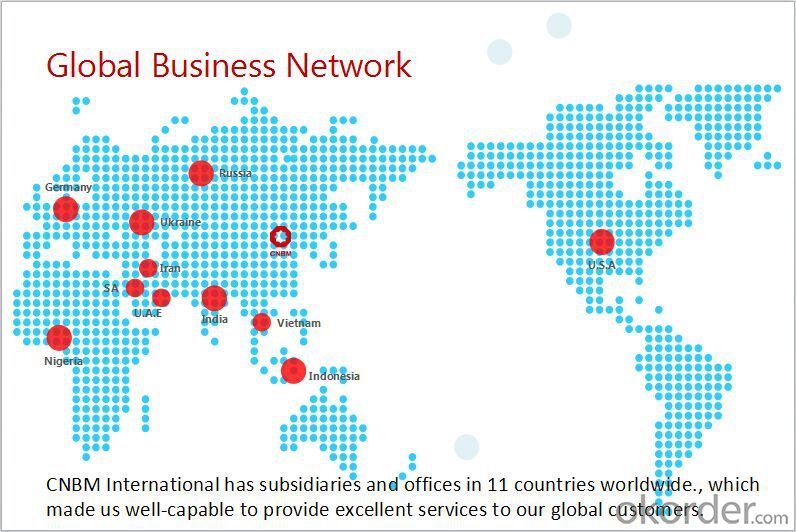
FAQ
1, Your advantages?
professional products inquiry, products knowledge train (for agents), smooth goods delivery, excellent customer solution proposale
2, Test & Certificate?
SGS test is available, customer inspection before shipping is welcome, third party inspection is no problem
3, Factory or Trading Company?
CNBM is a trading company but we have so many protocol factories and CNBM works as a trading department of these factories. Also CNBM is the holding company of many factories.
4, Payment Terms?
30% TT as deposit and 70% before delivery.
Irrevocable L/C at sight.
5, Trading Terms?
EXW, FOB, CIF, FFR, CNF
6, After-sale Service?
CNBM provides the services and support you need for every step of our cooperation. We're the business partner you can trust.
For any problem, please kindly contact us at any your convenient time.
We'll reply you in our first priority within 24 hours.
Packaging & Delivery
1, Packaging: seaworthy package or as required
2, Delivery: 35-45 days or based on quantity
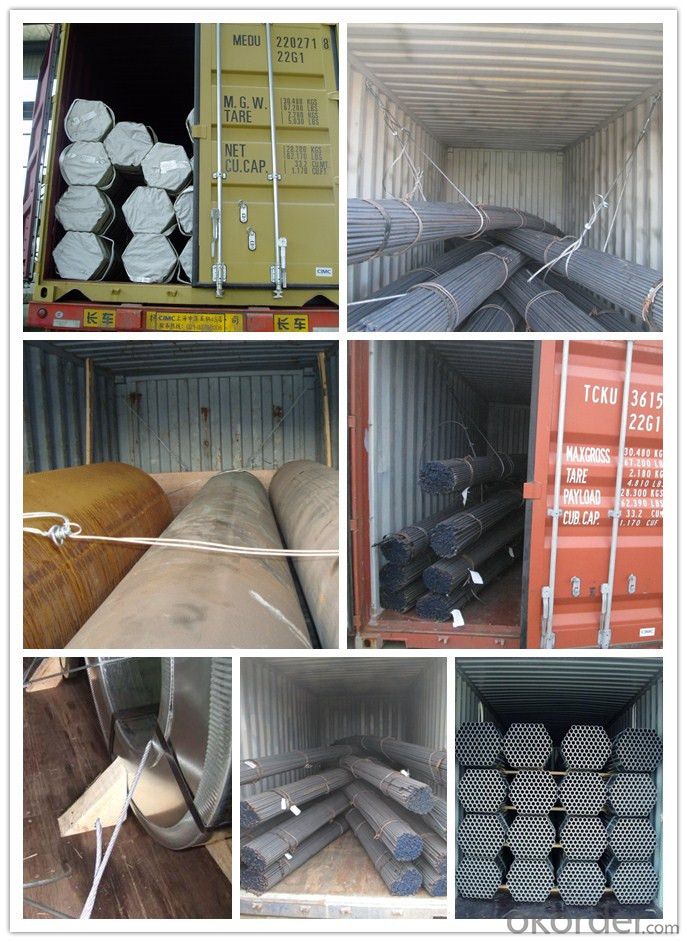
- Q: How do steel round bars compare to titanium round bars?
- Steel round bars and titanium round bars have distinct properties and are used for different purposes. Steel round bars are known for their high strength, durability, and affordability. They are commonly used in construction, manufacturing, and general engineering applications. On the other hand, titanium round bars are much lighter, have superior corrosion resistance, and exhibit high strength-to-weight ratio. This makes them suitable for aerospace, medical, and marine industries where weight reduction and resistance to harsh environments are crucial. Ultimately, the choice between steel and titanium round bars depends on the specific requirements and desired characteristics for the intended application.
- Q: Are steel round bars suitable for heat exchanger applications?
- Yes, steel round bars are suitable for heat exchanger applications. Steel is a widely used material in various industries, including heat exchangers, due to its excellent thermal conductivity and high strength. The round shape of the bars makes them easy to fabricate and install in heat exchanger systems. Steel round bars can efficiently transfer heat between two fluids, making them ideal for applications where heat exchange is required, such as in power plants, chemical processes, HVAC systems, and refrigeration units. Additionally, steel offers good corrosion resistance, which is crucial for heat exchangers that come into contact with different fluids. With proper design and material selection, steel round bars can effectively withstand high temperatures and pressure differentials, making them a reliable choice for heat exchanger applications.
- Q: What are the safety precautions to be taken while handling steel round bars?
- When handling steel round bars, it is important to follow certain safety precautions to prevent accidents and injuries. Here are some safety measures to be taken: 1. Personal Protective Equipment (PPE): Always wear appropriate PPE, such as safety goggles, gloves, and steel-toe boots, to protect yourself from potential hazards like flying debris, sharp edges, and crushing injuries. 2. Lifting Techniques: Use proper lifting techniques, such as bending your knees and using your leg muscles instead of your back, to avoid strain or back injuries. Do not attempt to lift heavy steel round bars alone; seek assistance or use lifting equipment like cranes or forklifts. 3. Secure Storage: Store steel round bars in a designated area or rack that is stable and secure. Ensure that they are properly stacked and organized to prevent them from falling or rolling onto someone. 4. Handling Tools: Use appropriate tools, such as tongs or lifting hooks, to handle steel round bars. Avoid using your hands or fingers directly to prevent cuts or pinching injuries. 5. Inspection: Before handling steel round bars, inspect them for any defects, sharp edges, or protrusions that may pose a safety risk. If any issues are found, report them to the appropriate personnel and do not use the bars until they are repaired or replaced. 6. Communication: Maintain clear communication with co-workers when handling steel round bars, especially in situations where multiple people are involved. Use hand signals or verbal cues to coordinate movements and avoid accidental collisions. 7. Proper Storage and Transportation: When storing or transporting steel round bars, ensure they are properly secured and adequately supported to prevent shifting, sliding, or falling during movement. 8. Training: Provide appropriate training to all personnel involved in handling steel round bars. This should include proper lifting techniques, the use of PPE, and awareness of potential hazards and safety procedures. By following these safety precautions, you can minimize the risk of accidents and injuries while handling steel round bars. Always prioritize safety to create a secure working environment for yourself and those around you.
- Q: What is the difference between a turned and a polished steel round bar?
- A turned steel round bar and a polished steel round bar both undergo separate processes that result in different surface finishes and properties. A turned steel round bar is typically created by using a lathe machine to remove material from the surface of a steel bar. This process involves rotating the bar against a cutting tool, which cuts away the outer layer and leaves behind a smooth and cylindrical surface. The turned bar may have visible machining marks due to the cutting process, although it is generally considered to have a more precise and uniform diameter compared to other types of steel bars. Turned bars are often used in applications where dimensional accuracy is crucial, such as in machinery or tooling. On the other hand, a polished steel round bar undergoes a different process that involves grinding or buffing the surface to achieve a smooth and reflective finish. Polishing removes any imperfections or roughness from the surface of the steel bar, resulting in a highly lustrous appearance. Polished bars are often used in decorative applications or where visual aesthetics are important, such as in architectural designs or high-end consumer products. In summary, the main difference between a turned and a polished steel round bar lies in their respective manufacturing processes and resulting surface finishes. A turned bar is machined to achieve precise dimensions, while a polished bar is subjected to a polishing process to obtain a smooth and reflective surface. The choice between the two depends on the specific requirements of the application, with turned bars being preferred for dimensional accuracy and polished bars for aesthetic appeal.
- Q: Are steel round bars suitable for machining applications?
- Yes, steel round bars are commonly used in machining applications due to their high strength, durability, and machinability. They can be easily shaped, cut, drilled, and turned into various components, making them suitable for applications in industries such as automotive, aerospace, construction, and manufacturing.
- Q: What are the different grades of stainless steel round bars for marine applications?
- For marine applications, stainless steel round bars come in various grades. The commonly used grades are 304, 316, and 316L stainless steel. Grade 304 stainless steel is a versatile alloy known for its good corrosion resistance, high strength, and excellent formability. It is often utilized in marine applications that require moderate corrosion resistance. Grade 316 stainless steel is similar to grade 304 but contains additional molybdenum. This enhances its corrosion resistance, especially against chlorides and other aggressive marine environments. Grade 316 is preferred in marine settings that demand increased resistance to corrosion. Grade 316L stainless steel is a low carbon version of grade 316. Its resistance to sensitization and intergranular corrosion is further improved. This makes it highly suitable for marine applications that involve welding, reducing the risk of corrosion at the welds. Apart from these grades, there are specialized stainless steel alloys like duplex stainless steel. These alloys combine the advantages of austenitic and ferritic stainless steels, offering even greater corrosion resistance and strength. They are suitable for demanding marine applications. When choosing stainless steel round bars for marine applications, it is crucial to consider specific environmental conditions such as exposure to saltwater, chemicals, or high temperatures. Seeking guidance from a materials specialist or referring to industry standards can help ensure the appropriate grade is selected for the specific marine application.
- Q: What is the maximum silicon content allowed for steel round bars?
- The maximum silicon content allowed for steel round bars is typically around 0.35%.
- Q: Can steel round bars be used for making propeller shafts?
- Yes, steel round bars can be used for making propeller shafts. Steel is a commonly used material for propeller shafts due to its strength, durability, and resistance to corrosion. Round bars, in particular, are often chosen for their shape, which provides optimal strength and load-bearing capabilities. The selection of steel grade and specific properties will depend on the requirements of the propeller shaft, such as the desired length, diameter, and torque capacity. Additionally, other factors like cost, weight, and manufacturability may also influence the choice of steel round bars for propeller shafts.
- Q: What are the options for joining steel round bars?
- There are several options for joining steel round bars, depending on the specific requirements and applications. Some common methods include welding, bolting, and adhesives. 1. Welding: Welding is a widely used method for joining steel round bars. It involves melting the ends of the bars and fusing them together using a welding process such as arc welding, MIG welding, or TIG welding. Welding provides a strong and durable joint that can withstand high loads and stresses. 2. Bolting: Bolting involves using bolts, nuts, and washers to join steel round bars. Holes are drilled through the bars, and bolts are inserted through these holes. The nuts are then tightened to secure the bars together. Bolting is a relatively simple and quick method, and it allows for disassembly and reassembly if required. 3. Adhesives: Adhesives can also be used to join steel round bars. High-strength industrial adhesives are applied to the mating surfaces of the bars, which are then pressed together and left to cure. Adhesive bonding can provide a strong and durable joint, particularly in applications where welding or bolting may not be feasible or desired. 4. Mechanical couplings: Mechanical couplings are specifically designed for joining steel round bars. These couplings typically consist of two separate components that are fitted over the ends of the bars and tightened together using screws, clamps, or other mechanical means. Mechanical couplings provide a reliable and secure joint without the need for welding or drilling. 5. Cold forming: In some cases, steel round bars can be joined through cold forming techniques such as swaging or crimping. These methods involve mechanically deforming the ends of the bars to create a tight and secure joint. Cold forming is often used in applications where welding or other traditional methods are not suitable. It is important to consider the specific requirements, load-bearing capacities, and environmental conditions when selecting the appropriate method for joining steel round bars. Consulting with a professional engineer or welder can help determine the best option based on the specific application and desired outcome.
- Q: What are the different types of steel round bar alloys for improved wear resistance?
- Various steel round bar alloys have been specifically developed to enhance wear resistance. These alloys are designed to possess increased hardness and toughness, making them suitable for situations where constant friction or abrasive forces are present. One popular alloy is tool steel, which includes variations such as H13, D2, and A2. Tool steel is renowned for its high hardness, exceptional wear resistance, and good toughness. It finds common usage in applications such as molding and forming tools, cutting tools, and dies. Stainless steel is another alloy utilized for improved wear resistance. Stainless steel round bars are resistant to corrosion and possess strong properties. They are frequently employed in applications like food processing equipment, medical devices, and marine components. Abrasion-resistant steel, also referred to as AR steel, is a distinct type of alloy used to enhance wear resistance. AR steel is specially formulated to endure impacts and abrasion, making it ideal for applications in mining equipment, construction machinery, and material handling systems. Manganese steel is another alloy that provides exceptional wear resistance. It is commonly utilized in applications involving high impact and abrasive wear, such as crusher jaws, railroad crossings, and excavator buckets. Lastly, there are specialty alloys like chrome-moly steel (chromium-molybdenum) and nickel-chromium alloys, which offer superior wear resistance under specific conditions. These alloys are frequently employed in high-temperature applications, such as aerospace components, power generation equipment, and automotive parts. In conclusion, a variety of steel round bar alloys, including tool steel, stainless steel, abrasion-resistant steel, manganese steel, and specialty alloys, have been developed to enhance wear resistance. Each alloy possesses unique properties and is suitable for specific applications where wear resistance is crucial.
Send your message to us
4130 4140 4150 20MnCr5 42CrMo4 8620 4340 Alloy Round Steel Bar
- Loading Port:
- China main port
- Payment Terms:
- TT OR LC
- Min Order Qty:
- 30 m.t.
- Supply Capability:
- 10000 m.t./month
OKorder Service Pledge
OKorder Financial Service
Similar products
Hot products
Hot Searches
Related keywords
